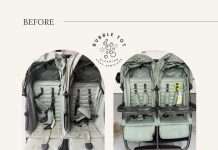
Pediatric emergencies can be scary, especially as a parent. It may feel like they happen out of nowhere, often leaving us little to no time to react. It can be a high fever detected in the middle of the night, a choking incident at the dinner table, or a severe allergic reaction on a picnic.
When it comes to little children, medical emergencies can escalate quickly. Children’s immunity is still developing, this makes them more vulnerable to injuries, infections, and allergic reactions. What starts as an inconvenience or a small issue can become serious in minutes.
For example, during routine playtime, a toddler may end up swallowing a small toy that blocks their airway. If not taken care of immediately, this could lead to brain damage within four minutes due to lack of oxygen. Being ready for such occurrences doesn’t mean just having a first-aid kit, it’s about having the knowledge and confidence to make decisions fast and act on them.
Common Pediatric Emergencies Every Parent Should Know
Some incidents are more common than others, like choking, allergic reactions, and random injuries. It is important that you learn about them, understand them, and be prepared for them.
Choking
Choking is one of the more severe conditions in children. A kid can choke when food, small toys, or even small household items block their airway. According to the New York State Department of Health, choking is one of the leading causes of unintentional deaths in children under the age of five.
Fevers
Another common emergency is fevers above 104°F in young children. In infants and toddlers particularly, it can lead to febrile seizures. These seizures aren’t necessarily harmful but do require immediate medical attention. Febrile seizures are generally brief and non-life-threatening. However, if they last for longer than 5 minutes, consider it a medical emergency and consult a doctor immediately.
Allergic Reaction
Allergies may be triggered by anything – from bee stings, to any food items or medications. An allergic reaction becomes an emergency when anaphylaxis occurs. It is also known as anaphylactic shock and is a serious life-threatening reaction that can occur very fast.
Difficulty in breathing, swelling of the throat, and a drop in blood pressure are only some symptoms of this condition. First aid requires immediate treatment with the injection of epinephrine. You should note that even if the symptoms stop with first aid, a medical professional should be consulted as the patient needs to be observed for a while after the shock.
Asthma Attacks
In children with a history of asthma, close supervision is a must because this condition can escalate rapidly. Symptoms such as rapid breathing, wheezing, and chest tightness can quickly worsen if not taken care of urgently.
According to an NIH study, the CDC states that 6.5% of children in the U.S. suffer from asthma. For so many of these kids, simply having access to a rescue inhaler may prevent the situation from becoming life-threatening.
Injuries
Sometimes a fall from the swing, a twisted ankle during playtime, or a concussion during game time, may go unnoticed. However, anything that can potentially cause head trauma, fractures, and severe cuts should be given immediate attention.
When you know what can happen, you are better prepared for emergencies. When you know first aid, you won’t waste time doubting yourself.
Panicking only makes things worse. So, the first and most important step is to stay calm. This information is meant to help you be aware and understand the possibilities of pediatric emergencies. You have taken the first step towards handling such events well.
Tools and Resources to Be Prepared
Learn Pediatric First Aid and CPR
Remember, first aid and CPR aren’t just for paramedics. Learning pediatric CPR can help you respond promptly in emergencies like choking. This is important because it can improve the survival chances of a child significantly. Learning these skills will only take you a few hours, but can help you save a life.
Create an Emergency Action Plan
Knowing what to do in emergencies is very important. To begin with, create a list of emergency contacts. Include contacts like ambulances, close friends and family, your family doctor, and your child’s pediatrician. Make sure this list is somewhere even your children can reach, accessible on your devices as well as on paper.
During routine checkups or emergencies, make sure you are consulting a certified doctor or nurse. A pediatrician may not always be available on call. A qualified nurse who has graduated from an MSN Pediatrics program and then obtained certification in PNP-PC may be the right person to seek guidance.
According to Spring Arbor University, a program like MSN helps professionals acquire skills that allow them to provide compassionate care for children.
Practical Steps for Pediatric Emergencies
Build a Well-Stocked Pediatric Emergency Kit
A general mistake we all make is creating a standard first-aid kit that lacks child-specific items. Considering the kids in the house and their specific needs, you should include items that they may need, like smaller bandages and gauzes, EpiPen, and cold packs for swelling.
Make sure to label everything clearly, and check expiration dates every six months. Keep an additional kit in your car or wherever your family spends most time next to your primary home.
Learn to Recognize Warning Signs and Act Promptly
Emergencies aren’t always obvious. You should know the signs of serious conditions as it can save critical time. Some examples of such signs are rapid breathing, vomiting after a fall, and lack of urination for more than 8 hours. There may be a lot of signs specific to your child’s condition. You can read about them or discuss the same with your doctor.
Practice Emergency Scenarios
By role-playing common emergencies with your child, you can prepare them for real situations. For instance, you can ask, “What will you do if daddy is on the floor, not able to speak and needs help?” You can go on to teach them how to call 911, describe what’s wrong, and share their location. This practice builds confidence for both you and your child.
No one wants to face a pediatric emergency, but unfortunately, it’s not in our hands. When emergencies happen, every second counts. The only way to deal with them is through preparation and readiness. Learn the right skills, keep the necessary tools, and have a plan. Finally, trust your gut. If something feels wrong, take quick action. Prevention is better than cure, even if it’s a false alarm. Take care!





















